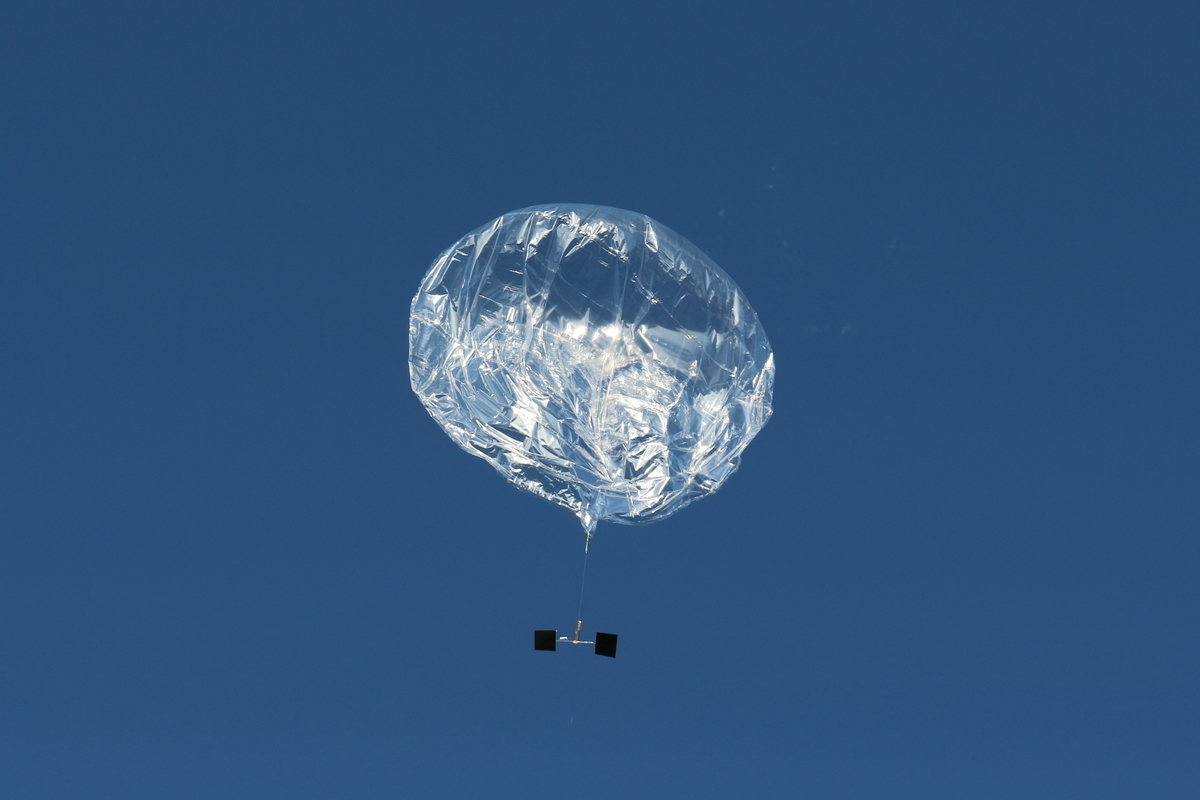On Sunday, December 11 Bristol SEDS students launched UBSEDS21 a 434 MHz Contestia and 144/145 MHz APRS solar powered balloon that may travel around the world.
Update Dec 23: UBSEDS21 over Spain having completed its first circumnavigation of the globe see track.
Update Dec 20: APRS creator Bob Bruninga WB4APR reports receiving @bristolseds UBSEDS21 balloon AD6AM-13 145.825 MHz Dec 20 1420 EST – Bob was Mobile in Annapolis MD.
Update Dec 18: UBSEDS21 has crossed the Pacific and reached Canada.
The UBSEDS21 balloon was built from 50 micron thick PA-EVOH-PE multilayer film and is about 1.9 meters in diameter, the payload weight was 34.2 grams.
After launch on December 11, 2016 the balloon achieved a stable altitude of 15.2 km flying in an easterly direction on its potential circumnavigation of the globe.
The initial plan was to use UBSEDS21 to contact the International Space Station (ISS) via APRS on 145.825 MHz. However, the VHF radio on the ISS is out of order, so this flight is used to test the amplifier and hopefully talk to any APRS enabled satellites.
The winter launch means the payload needs to deal with the sun staying low above the horizon during the day. For this reason, sideways facing solar panels were used.
Original post Dec 9:
Another pico launch from Bristol this Sunday, December 11 between 0500 and 0530 GMT. This launch is using a 1.9m envelope and longer payload train, and so we have a NOTAM in place. The flight is predicted to head south-east towards France.
The payload will be transmitting Contestia 16/1000 on 434.610 MHz USB. Each transmission of Contestia 16/1000 will be preceded by 10 seconds of pips and RSID.
The Contestia transmission rate will be once every 30 seconds during launch and when power is available during the day. Otherwise the transmission rate will be once every 2 minutes. Hopefully the tracker will operate from dawn to dusk, and maybe also during the night.
The tracker will transmit APRS outside countries where the amateur license is not permitted airborne (like the UK). Additionally it will test APRS on 145.825 MHz, with an output power of +26 dBm (400 mW).
More details will appear on the website http://www.bristol-seds.co.uk/flights.html
Many Thanks,
Richard Meadows M0SBU
Bristol SEDS http://www.bristol-seds.co.uk/
High Altitude Balloon tracking and information links https://amsat-uk.org/beginners/balloons/
Richard M0SBU took the amateur radio training courses run by the Chelmsford Amateur Radio Society (CARS) at Danbury in Essex. Further information on the courses is available from the CARS Training Coordinator, Christopher G0IPU
Tel: 07908-107951
Email: training2017 at g0mwt.org.uk
Web: http://g0mwt.org.uk/training
What is Amateur Radio? http://www.essexham.co.uk/what-is-amateur-radio
Find an amateur radio training course near you https://thersgb.org/services/coursefinder/

